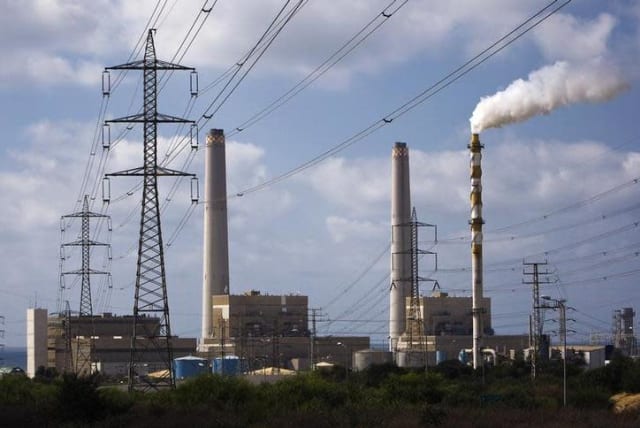Israel's 2022 greenhouse gas emissions surge, exceed Paris baseline

These statistics widen the gap between Israel and its international pledge to achieve a 27% reduction in greenhouse gas emissions by 2030.
Israel recorded its highest greenhouse gas emissions levels since 2012 last year, exceeding the baseline established by the Paris Agreement in 2015 for the first time, according to the latest report by the Pollutant Release and Transfer Register (PRTR).Contrary to the preceding two years, during which Israel successfully reduced emissions, 2022 saw a significant uptick, as emissions rose by 3.5% compared to the levels recorded in 2021.These statistics widen the gap between Israel and its international pledge to achieve a 27% reduction in greenhouse gas emissions by 2030, relative to the 2015 baseline.“It is more people; it is that the economy is not behaving sustainably. It is the lack of quality public transportation and any public transportation on Shabbat,” PRTR coordinator Uri Shilhav told The Jerusalem Post.
Will carbon taxation answer all of our emission problems?
The Environmental Protection Ministry said that the PRTR data underscores the immediate imperative for establishing a formal commitment to reduction targets through legislation that would empower all government ministries to propel national programs forward, utilizing economic instruments such as carbon taxation, the promotion of renewable energy, and the phased reduction of fossil fuel-powered vehicles.The ministry is already working on a series of critical measures to curb emissions. Among these initiatives, the ministry is working closely with the Prime Minister’s Office and other government ministries to advance the adoption of a Climate Law. This legislation would establish a framework for pricing greenhouse gas emissions, fostering a competitive, efficient, and environmentally responsible economy.However, the government has yet to agree on the terms of such a law and pass it to the Knesset.Moreover, while a pricing scheme for carbon, developed in partnership with the Finance Ministry, gained approval in 2021, it still needs to be passed by the Knesset.Israel committed to the PRTR when it joined the OECD. The energy, chemical, metal, food and drink, waste and wastewater and intensive animal husbandry industries report to the PRTR.In addition to the increase in greenhouse gases, the report showed a 357% increase in emissions and discharges due to malfunctions. This stemmed from brine leaks from feeder pipes of the Dead Sea Works.A similar high increase occurred in 2018 when large fires occurred in the Efeh, Duda’im and Yeruham landfills.The silver lining of the report was that for the first time in 2022, Israel’s industrial pollution levels were no worse than those of the European Union, which Shilhav said is a testament to Israel’s passing of the Clean Air Law 10 years ago.Other findings from the report:• Volatile Organic Compounds (NMVOCs) experienced a 20% increase.• Benzene emissions increased by 3%.• Sulfur dioxide emissions decreased by 9%.• PM10 particle emissions decreased by 2%.• PM2.5 particle emissions decreased by 6%.• Suspected or known carcinogens experienced a 2% decrease.
The Environment and Climate Change portal is produced in cooperation with the Goldman Sonnenfeldt School of Sustainability and Climate Change at Ben-Gurion University of the Negev. The Jerusalem Post maintains all editorial decisions related to the content.
Jerusalem Post Store
`; document.getElementById("linkPremium").innerHTML = cont; var divWithLink = document.getElementById("premium-link"); if (divWithLink !== null && divWithLink !== 'undefined') { divWithLink.style.border = "solid 1px #cb0f3e"; divWithLink.style.textAlign = "center"; divWithLink.style.marginBottom = "15px"; divWithLink.style.marginTop = "15px"; divWithLink.style.width = "100%"; divWithLink.style.backgroundColor = "#122952"; divWithLink.style.color = "#ffffff"; divWithLink.style.lineHeight = "1.5"; } } (function (v, i) { });

